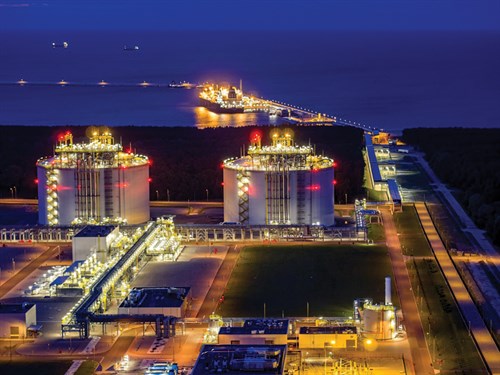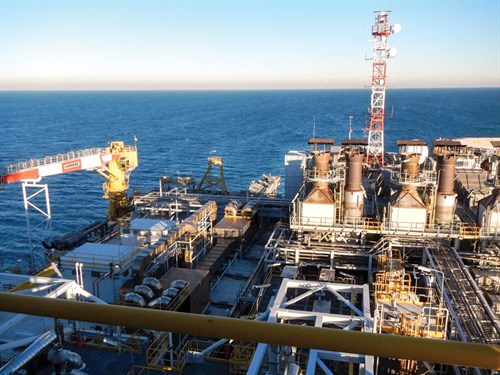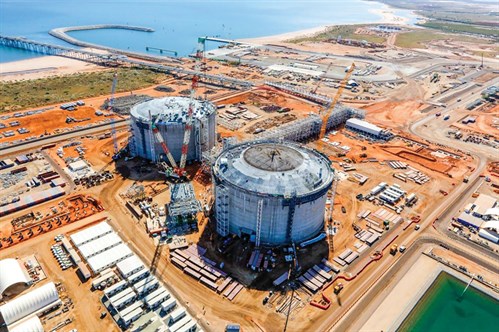Industry Focus: COVID-19 stokes competition for Europe’s LNG market
The level of competition in the global LNG market is rising as major producers look to increase their shares in a market severely weakened by the COVID-19 pandemic. One such producer is Russia, which aims to become a leading player in the global LNG market by increasing domestic LNG production and exports. However, Qatar, the U.S. and Australia will give Russia a “run for its money” as LNG exporters claw back from depressed demand levels through the first half of the year.
Russia marks record exports in 2020. Russia has achieved progress in this direction during 2020, as reflected by a nearly 12% increase in its LNG exports in the first half of the year, compared to January–June 2019. This marked a success for Russia during a period of significant weakness in global LNG demand due to the spread of the COVID-19 pandemic. Last year, the country exported a record 29.3 metric MMt of LNG.
Russian LNG exporters benefit from low logistics costs and flexible pricing policies, which makes its supply attractive to Asian importers. In June alone, Russia sent 550 MMm³ of LNG to China, which is significantly higher than the US export volume to China over the same period. However, Russia has a slightly tougher time in the EU market. Its major rivals in the global LNG export market—Qatar, the U.S. and Australia—provide Russia with challenging competition.
Qatar seeks more EU market share. Qatar has found success through occasional “dumping” of LNG at the lowest possible price. According to Qatari media reports, the country’s LNG export volume expanded by 1 MMt to 41 MMt (56.6 Bm³) in the first half of 2020. Qatar’s plan to increasingly expand its influence in the global and EU markets has included an increase in the utilization of Qatar’s LNG terminals of 7% over the same period.
The majority of Qatar’s LNG producers export on long-term contracts, where the price of gas is tied to the price of oil. This year, such agreements became unfavorable for consumers as excess supply and falling demand caused gas prices to fall to record-low levels. However, Qatar also boasts the world’s lowest cost of LNG production ($150/1,000 m³ of LNG produced), giving it cost benefits over its global rivals.
Qatar is also using its LNG supply as a political boon. To provide further incentive to buy its LNG, Qatar is offering its supply as a secure alternative to Russia’s state-owned gas monopoly, Gazprom. In recent months, Qatar has become the largest supplier of LNG to the recently built Świnoujście LNG terminal in Poland (FIG. 1).
 |
| FIG. 1. The LNG regasification terminal in Świnoujście is the largest regasification facility in Central and Eastern Europe. |
Qatar is also looking to accelerate its LNG expansion in Eastern Europe by commencing deliveries to Croatia and Hungary via the existing LNG terminal on the Croatian island of Krk. Initial volumes will reach 468 MMm³y and increase to 1 Bm³y over the next several years. A number of other LNG receiving terminals in Europe handle primarily Qatari LNG, such as the Adriatic LNG terminal (FIG. 2) with a capacity of 8 Bm³/yr. Furthermore, in 2019 state-run Qatar Petroleum fully booked a terminal in Zeebrugge, Belgium through 2044 with a capacity of 9 Bm3.
 |
| FIG. 2. The Adriatic regasification terminal is the world’s first offshore gravity-based LNG regasification terminal. |
In June, Qatar Petroleum allocated $19 B to build a fleet of 100 tankers in South Korea. The vessels are designed to transport additional volumes of LNG, which the company will produce on the basis of North/South Pars, one of the world’s largest gas fields in terms of reserves. Qatar operates a fleet of 67 LNG gas carriers at present.
U.S. seeks footholds amid improving market conditions. Although global gas prices have rebounded slightly from very low levels seen during the COVID-19 pandemic, the recent increases may not be enough to help the U.S. significantly increase its LNG exports to the EU market. The high production cost of U.S. LNG puts it in a tough spot with competitors Russia, Qatar and Australia.
The August 2020 surge in gas prices at Henry Hub will increase the production cost of U.S. LNG to Europe to $225–$230/1,000 m³, vs. an average cost of $190/1,000 m³ over the first 7 mos of 2020. This could worsen the U.S.’s competitive position in the EU LNG market, which is seeking LNG at a production cost of $120–$140/1,000 m³ through the end of 2020, according to analysis by VYGON Consulting.
Asia-Pacific juggles supply/demand imbalance. The decline in global gas prices, along with growing gas scarcities in some areas of Australia, has forced investors in Australia and elsewhere to reconsider further expansions. At present, at least two dozen LNG projects around the world have either been postponed or are experiencing serious financial setbacks.
In recent years, a number of expensive, large-scale LNG export facilities has been built in Australia, among the largest of which are Gorgon LNG (15.6 MMtpy) Australia-Pacific LNG (9 MMtpy), Wheatstone LNG (FIG. 3) (8.9 MMtpy) and Ichthys LNG (8.9 MMtpy). However, most of these mega-terminals can maintain profitability at a gas price of $250–$280/1,000 m³.
 |
| FIG. 3. Wheatstone LNG is one of Chevron’s flagship LNG plants in Australia. |
The current market situation is leading to serious losses for not only producers, but also their major customers. For example, Japanese company JERA is losing tens of billions of yen due to its involvement in long-term LNG contracts under oil-linked prices and “take-or pay” conditions. Japan’s gas demand has fallen by 19% this year, and local buyers are experiencing a surplus of supply amid insufficient storage. This scenario has led to a number of Japan-bound LNG cargoes being resold on the spot market at lower prices. JERA CEO Hitoshi Nishizawa noted that strict sale-and-purchase agreements are no longer suitable for a rapidly changing LNG market.
Many analysts are looking to China as a driver of recovering demand for LNG. Five of the world’s six largest new regasification terminals are being constructed on Chinese soil. In addition, China’s government has confirmed its plan to reduce the share of coal in the country’s overall energy structure from 55% by replacing coal volumes with LNG. GP
 |
EUGENE GERDEN is an international contributing writer specializing in the global oil refining and gas industry. He has been published in a number of prominent industry publications.




Comments